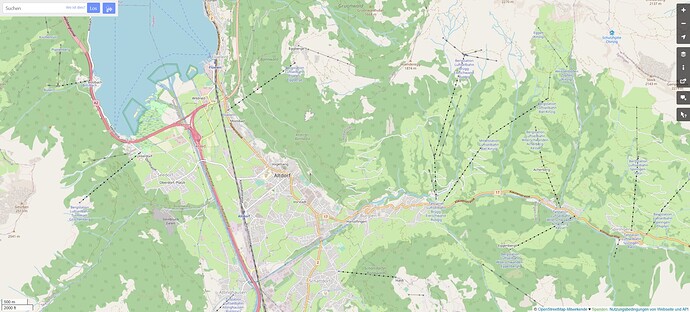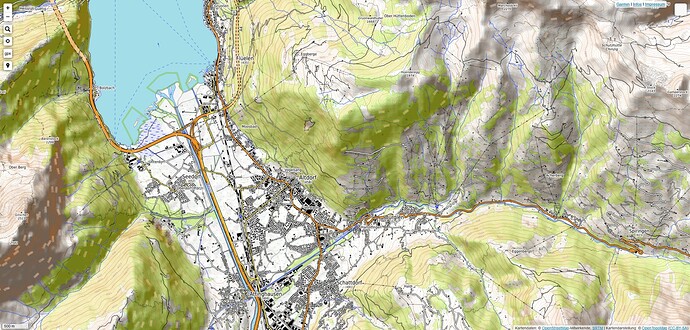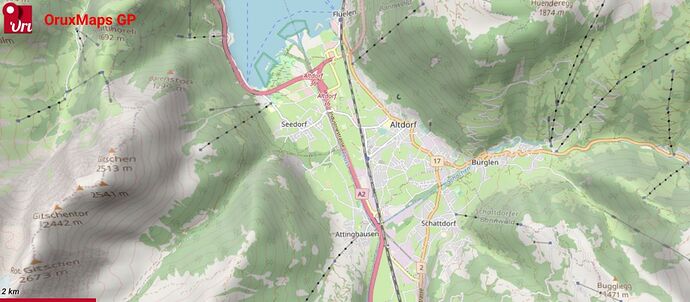Hi everybody,
I am regular user of OSM and occasional contributor. I am not in the position to “request” anything (inappropriate anyway at OSM), and technically, I do not know much about the deeper mechanisms, but I would like to suggest some additions for the main map displayed at https://www.openstreetmap.org.
Basically I would propose the addition of
1. Contour lines
2. Hill shades
The result should look like a mixture between the current default layer and the OpenTopoMap.
I know that OSM is not a map (only), but a database of geo objects. Nevertheless, we should expect that most people have their only contact with OSM through the default map, hence the map should satisfy a general purpose, like outdoor planning and getting a first impression from a geographical area. I have observed that I often consult alternative maps as the “flat” default map does not satisfy my needs.
The proposed additions are most prominent where the terrain is steep, hence the probability is high that there are not many other features in the map (like buildings, streets), therefore the proposed additions would not clutter the map too much and distract from existing content.
I know that hill shades and contour lines are not part of the OSM project and have to be pulled and implemented from other sources (as it is the case already for example in the CyclOSM layer).
It seems that there have been deep discussions about the purpose and aim of the general map, but I do not want to trigger a fundamental discussion.
I would handle it pragmatically and just improve the style. May be, there could be an evaluation phase: an “enhanced” version of the map is added as additional layer. Using some site analytics (if possible at all?) could help to determine which style is used by the users more often. Depending on the result, one could introduce a new default style.
An alternative approach would be to have additional overlays (similarly to the GPS tracks that can be switched on and off).
I am coming forward with this proposal as I feel that the current map style is not taking full advantages of an open source map, and that the map is not attractive enough for a typical use case.
To get a first idea about the opinions present, we could have an informal vote here.
- No, keep the default style as it is
- Yes, please add hill shades and contour lines
- May be yes, but in another way (welcome to comment).
0 voters



